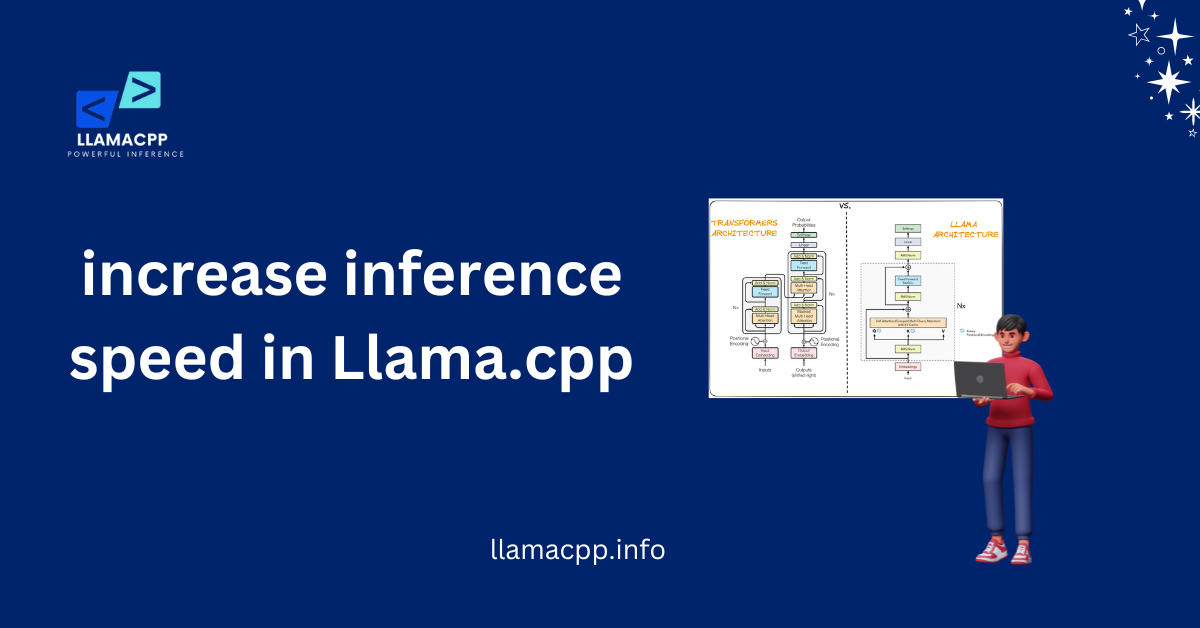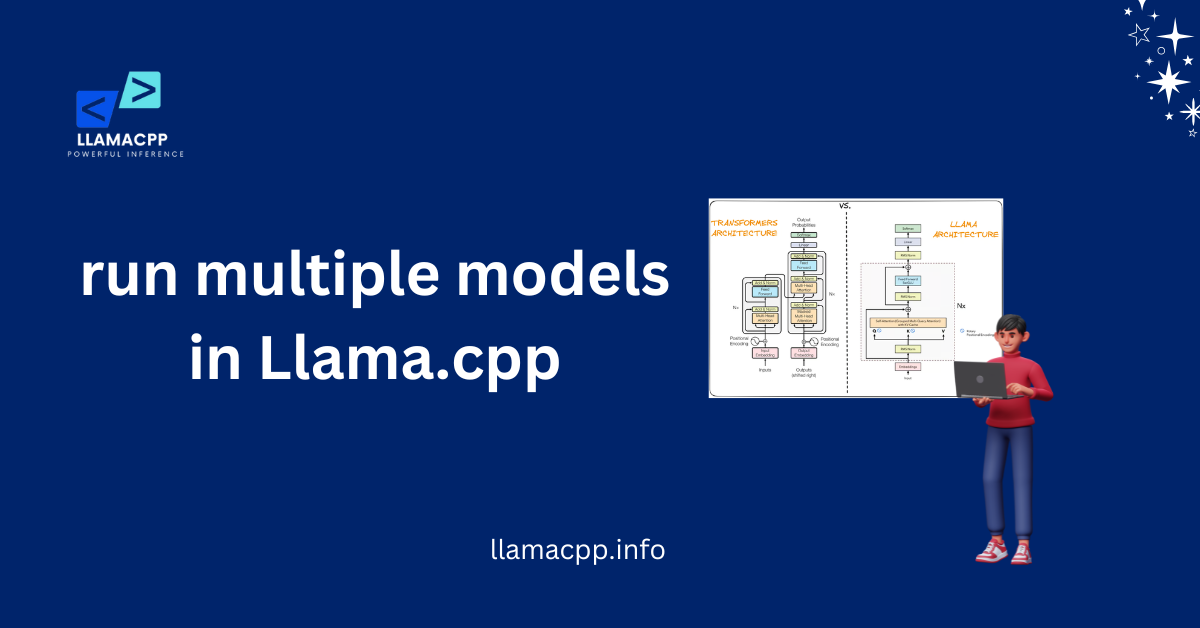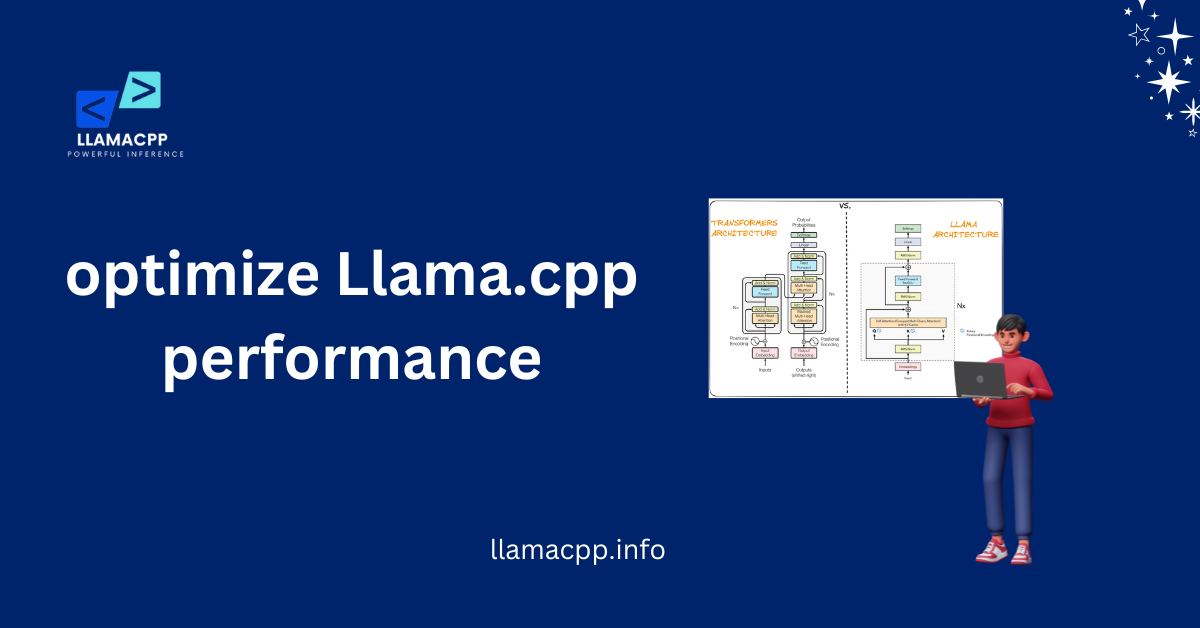Table of Contents
ToggleIntroduction
You can get faster AI reactions and smoother performance by increase inference speed in Llama.cpp. It can be unpleasant to work with models that are too slow, especially when you’re creating real-time apps. It could be not suitable for the user if your AI takes too long to handle requests. Faster reasoning means faster responses, higher productivity, and better communication with users. The good news? To make things go faster, you don’t need fancy gear or code that is hard to understand. You can speed up Llama.cpp by making a few innovative changes.
Getting the fastest deduction is all about using the proper methods. You can change settings, use compression, or find the best way to use memory. Each step cuts down on working time without affecting accuracy. Small changes can make a big difference whether you run AI on a PC, laptop, or server. This guide will show you easy and practical ways to make Llama.cpp RAM requirements run faster. Prepare to have AI work quicker and better with ease!
Why Should You Care About Inference Speed?
Speed of inference is essential for AI to work well. Response times that are too slow hurt the user experience. You can use Llama.cpp to make apps or automate tasks. Quick responses make AI more useful. A model that is too slow can lead to delays and anger.
To increase inference speed in Llama.cpp, it needs to be optimized better. AI can do its job better when it can understand information faster. This is very important for real-time apps. If you follow the right steps, you can answer faster without losing accuracy.
It’s easier to do things in real-time.
For real-time use, AI has to be able to work quickly. Models that are too slow fail at jobs that need results right away. Hardware and program changes can help speed up inference in Llama.cpp. Replies can be faster with even small changes.
Chatbots and personal helpers work better when AI is faster. Users lose interest if there is a wait. Quick processing makes sure that exchanges go smoothly and are helpful.
Less hardware stress
Slow AI can make your machine too busy. If the speed of reasoning is slow, performance goes down. Getting rid of unnecessary system load is important for increase inference speed in Llama.cpp. This keeps things working well.
If processing is faster, gear doesn’t have to work as hard, improving steadiness and energy use. AI can run better with even small changes.
AI got better. How Accurate and Effective.
Accuracy is affected by speed. AI might not be able to give the proper replies if it takes too long. Refining settings in increase inference speed in Llama.cpp. Getting answers quickly makes everything work better.
Fast AI can do more work with less time, which helps with making decisions. If it is well optimized, AI can be both quick and right.

Understanding how Llama.cpp is put together
Llama.cpp is made so that AI models can run well on a variety of platforms. It reads text by cutting it up into smaller pieces, which speeds up and improves answers. The design is based on speed and memory use, which makes AI run more smoothly.
To increase inference speed in Llama.cpp, you need to know how it is put together. It cuts down on working time by using optimized libraries and hardware settings. After learning how it works, you can make the right changes to get better results.
How Text Processing Works in Llama.cpp
Llama.cpp reads words one line at a time, which makes it easy to handle because it breaks up big inputs into smaller ones. This method helps speed things up and lower lag.
To increase inference speed in Llama.cpp, it’s important to improve how text is processed. AI can be made faster and more sensitive by eliminating unnecessary data and changing the size of batches.
Managing memory to make AI run faster
Smart memory use is important for AI speed. Llama.cpp stores info in a way that makes the system less busy, making it easier to finish big jobs quickly.
Clearing out memory that isn’t being used and using lightweight models can help speed up inference in Llama.cpp. AI works better when resources are managed well.
Use of hardware more efficiently
Llama.cpp can work with many kinds of gear. It changes processing based on what the machine can do, keeping things running smoothly.
To speed up inference in Llama, cpp, it’s essential to use the correct hardware settings. You can speed up AI by choosing faster computers and changing the power settings.
Making the best use of hardware
Hardware is an important part of how well AI works. When a system is well-optimized, models run faster and better. Processing slows down if the tech isn’t used correctly.
To speed up Llama.cpp’s reasoning, it’s important to make the most of the available hardware. When you use the right choices and upgrades, speed can go up. Picking the right tools will make AI work better.
Processing is faster when you use a powerful GPU.
CPUs aren’t as good at AI jobs as GPUs. It speeds up replies because they do more than one calculation at once. A powerful GPU cuts down on delays and makes AI models run faster.
Choosing a high-performance GPU can help increase inference speed in Llama.cpp. Optimizing the GPU settings increases processing speed even more.
Getting the most out of your CPU
CPUs are still important, even though GPUs make things run faster. A well-optimized CPU can handle jobs better and respond faster, and AI models can work better if the CPU settings are tweaked just right.
Changing the CPU power and turning on multi-threading can speed up reasoning in Llama.cpp. Thanks to these changes, the AI can now handle data more quickly.
Getting rid of memory bottlenecks
AI function can be slowed down by memory that is too slow. The speed of inference slows down if data is not reached quickly. Slowdowns can be avoided by making the best use of memory.
In Llama.cpp, you can speed up inference by eliminating unused memory and using fast storage choices. AI works more smoothly when memory is managed correctly.
Quantization Methods to Speed Things Up
Quantization reduces AI models’ precision, making them smaller. This speeds up the process without lowering the quality too much. Smaller models are also more efficient because they need less memory.
Using quantization in Llama.cpp is a smart way to speed up reasoning. To keep speed high, it helps AI work well on a variety of hardware. Picking the right method is the key to finding the best balance between speed and accuracy.
Cutting down on model size to speed up processing
It takes longer to handle big models. AI can make answers faster by making them smaller. Quantization cuts down on memory use and speeds up operations.
Models can be changed to lower-bit forms like 8-bit or 4-bit to increase inference speed in Llama.cpp. This makes the hardware work better by easing its load.
Cutting down on precision without losing accuracy
It is faster to work when precision is lower, but accuracy must stay high. AI works well and doesn’t make big mistakes when it uses suitable quantization methods.
To increase inference speed in Llama.cpp, finding the right balance between speed and accuracy is essential. Testing different settings ensures that AI responds smoothly.
Making it work better with different kinds of hardware
Large AI models can be challenging for some systems. Quantization makes it possible for models to work well on a wide range of hardware. This makes things more flexible and improves efficiency.
It is essential to use quantization methods that work with the device in increase inference speed in Llama.cpp. By tweaking the settings, you can make AI run faster on any machine.
Putting the SparQ Attention Mechanism
An AI engine works with a lot of data. It sometimes deals with details that aren’t important, which slows things down. SparQ Attention fixes this problem by only showing important details. It skips formulas that aren’t needed, speeding up AI models.
Using SparQ Attention is a great way to increase inference speed in Llama.cpp. It cuts down on working time, which makes the model work better. Response times get faster when there are fewer calculations to do. This makes things easier for the user without lowering the accuracy.
Cut down on computations that aren’t needed.
The old AI models look at all of the data and process it, which takes longer and makes things run more slowly. SparQ Attention gets rid of information that isn’t important. Only information that is useful for processing is stored.
Cutting down on extra operations is the best way to increase inference speed in Llama.cpp. This method makes it easier for AI models to do complex jobs quickly.
Improving Focus to Get Better Results
AI has trouble setting priorities when it has to deal with too much information. SparQ Attention helps the model keep its Attention on the most important things, making answers faster and more accurate.
It is important to change the attention levels in Llama.cpp dependencies to speed up inference. These layers can be tweaked to help the AI make faster, better choices.
Cutting down on memory use
An AI model needs memory to store information and work on it. When too much memory is used, it takes longer to do things. SparQ Attention saves memory by skipping over unnecessary information.
To speed up reasoning in Llama.cpp, memory needs to be optimized. AI models work more efficiently and produce results more quickly when memory is better managed.
Putting together efficient frameworks for inference
For AI models to work well, they need the right tools. Some of them may slow down if they aren’t optimized. It is easier to get things done quickly and well when you use efficient inference tools.
Picking the proper framework is essential if you want to increase inference speed in Llama.cpp. These frameworks improve general efficiency, speed up computations, and lower wait times. This makes things go faster, and AI responds better.
How to Pick the Right Framework
There are pros and cons to each structure. Some are light, while others are more concerned with realism. Better speed is guaranteed if you choose the best one for Llama.cpp.
The best way to increase inference speed in Llama.cpp is to use a framework that strikes a good balance between speed and accuracy. This helps get things done quickly without losing accuracy.
Cutting down on latency to get results faster
Responding slowly hurts the user experience. An optimized framework cuts down on latency by controlling resources well. The AI software now takes less time to respond.
To increase inference speed in Llama.cpp, you need to use tools that reduce delays. As processing speeds go up, AI exchanges become smoother and more effective.
Making the best use of resources
AI models need to be able to handle their resources well. A system that works well together makes sure that both the CPU and GPU are used equally. This keeps things from slowing down and makes them work better.
To speed up Llama.cpp’s reasoning, it’s essential to make the best use of its resources. When a system is well-run, it works faster and completes jobs more quickly.
Conclusion
It’s important to optimize AI models so they run faster and better. If you use the right methods, you’ll get quick and correct results. Changing the hardware, using quantization, and using efficient tools can all help speed up inference.
Every little change helps increase inference speed in Llama.cpp. Processing goes faster when you cut down on unnecessary processes, use resources wisely, and fine-tune a model in llama.cpp. When AI models use these tactics, they become more responsive and useful.
FAQs
1. How can I speed up Llama.cpp’s inference?
You can speed up Llama.cpp’s inference by making the hardware work better, using quantization methods, and adding efficient inference frameworks. These ways speed up processing and make it work better.
2. Why is the speed of reasoning critical for AI models?
How fast an AI machine responds is based on its inference speed. Faster inference makes AI systems more practical by reducing wait times and improving the user experience.
3: Does compression help Llama? Cpp run faster?
Yes, quantization shrinks the model and makes it easier to compute, which speeds up inference in Llama.cpp without hurting accuracy too much.
4. What changes can be made to the hardware to speed up inference?
Getting a better GPU, making the best use of memory, and distributing work between the CPU and GPU can increase inference speed in Llama.cpp and make the model run faster.
5. What kinds of inference systems work best with Llama.cpp?
Frameworks like ONNX, TensorRT, and FasterTransformer are great for improving AI models. They help speed up Llama.cpp’s reasoning by making it more efficient and cutting down on delays.




















